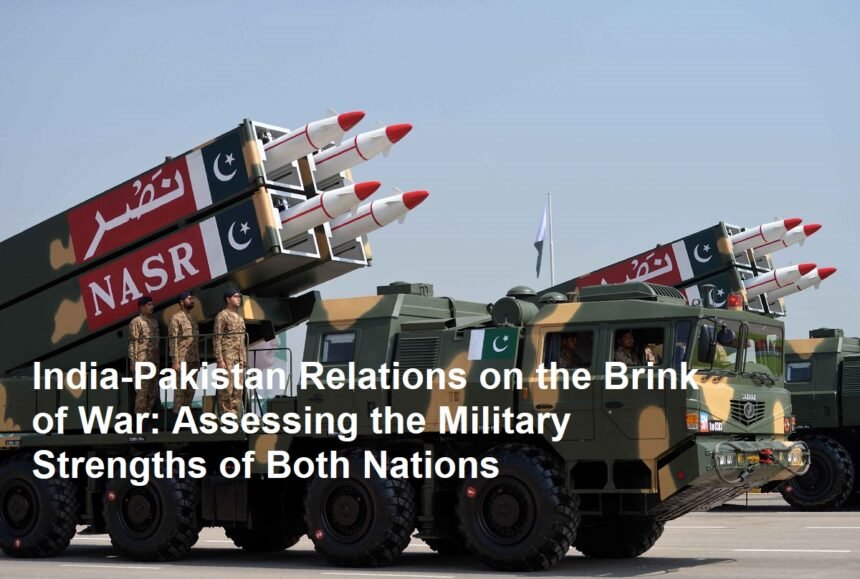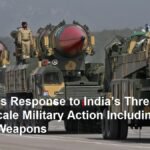The longstanding rivalry between India and Pakistan has escalated sharply, bringing the two nuclear-armed neighbors to the brink of war. Recent incidents, including cross-border skirmishes, terrorist attacks, and political provocations, have intensified hostilities, raising global concerns about regional stability and security.
Background of the Conflict
India and Pakistan have fought multiple wars since their independence in 1947, primarily over the disputed Kashmir region. The conflict is deeply rooted in historical, religious, and territorial disputes, with both countries maintaining a heavy military presence along their shared border.
Recent escalations have been triggered by terrorist attacks in Indian-administered Kashmir, which India accuses Pakistan-based militant groups of orchestrating. In response, India has increased military operations and diplomatic pressure, while Pakistan has vowed to defend its interests and support Kashmiri separatists.
Military Strength of India
India boasts one of the world’s largest and most technologically advanced armed forces. Its military comprises the Indian Army, Navy, and Air Force, supported by a robust defense industry and strategic partnerships.
- Personnel:Approximately 1.4 million active personnel and over 1.1 million reserves.
- Budget:India’s defense budget exceeds $70 billion annually, enabling modernization and procurement of advanced weaponry.
- Army:Equipped with modern tanks, artillery, and infantry units, India’s army is trained for high-altitude warfare in Kashmir.
- Air Force:Operates a fleet of over 1,700 aircraft, including advanced fighters like the Rafale, Su-30MKI, and indigenous Tejas jets.
- Navy:Possesses a blue-water navy with aircraft carriers, submarines (including nuclear-powered), and destroyers, capable of projecting power in the Indian Ocean.
- Nuclear Capability:India maintains a credible nuclear deterrent with land-based missiles, aircraft-delivered weapons, and submarine-launched ballistic missiles.
Military Strength of Pakistan
Pakistan’s military, though smaller in size, is highly professional and battle-hardened, with significant experience in asymmetric warfare and counterinsurgency.
- Personnel:Around 654,000 active personnel and approximately 550,000 reserves.
- Budget:Pakistan’s defense budget is about $12 billion, focused on maintaining readiness and nuclear deterrence.
- Army:Well-trained infantry and armored units, with a focus on mountain warfare and rapid mobilization.
- Air Force:Operates around 400 aircraft, including F-16s and JF-17 Thunder fighters developed jointly with China.
- Navy:Smaller than India’s but growing, with submarines and frigates aimed at securing maritime interests.
- Nuclear Capability:Pakistan possesses a robust nuclear arsenal with tactical and strategic weapons, including short-range ballistic missiles and cruise missiles.
Strategic Considerations
Both countries maintain a doctrine of credible minimum deterrence, with nuclear weapons serving as a deterrent against full-scale war. However, the risk of escalation remains high due to border skirmishes, terrorist activities, and political rhetoric.
India’s conventional superiority is offset by Pakistan’s strategic use of asymmetric tactics and its nuclear deterrent. The terrain of Kashmir, with its challenging mountainous environment, further complicates military operations.
International Concerns and Diplomatic Efforts
The international community, including the United Nations, the United States, China, and Russia, has urged restraint and dialogue to prevent conflict. Diplomatic channels remain open but fragile, with trust deficits and nationalist sentiments hindering progress.
Conclusion
As India and Pakistan stand on the edge of potential conflict, understanding their military capabilities is crucial. India’s larger and more technologically advanced forces contrast with Pakistan’s strategic depth and nuclear deterrence. The situation demands careful management to avoid escalation and promote lasting peace in the region.









